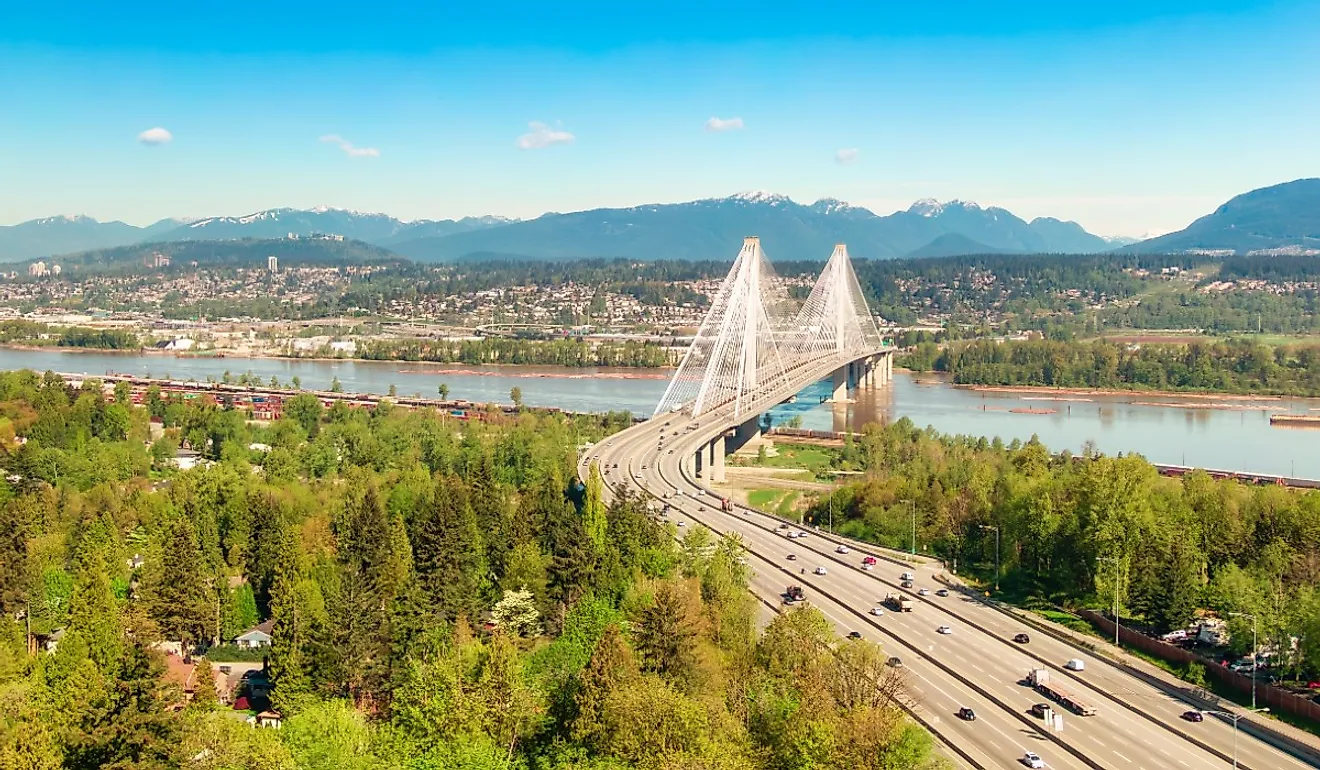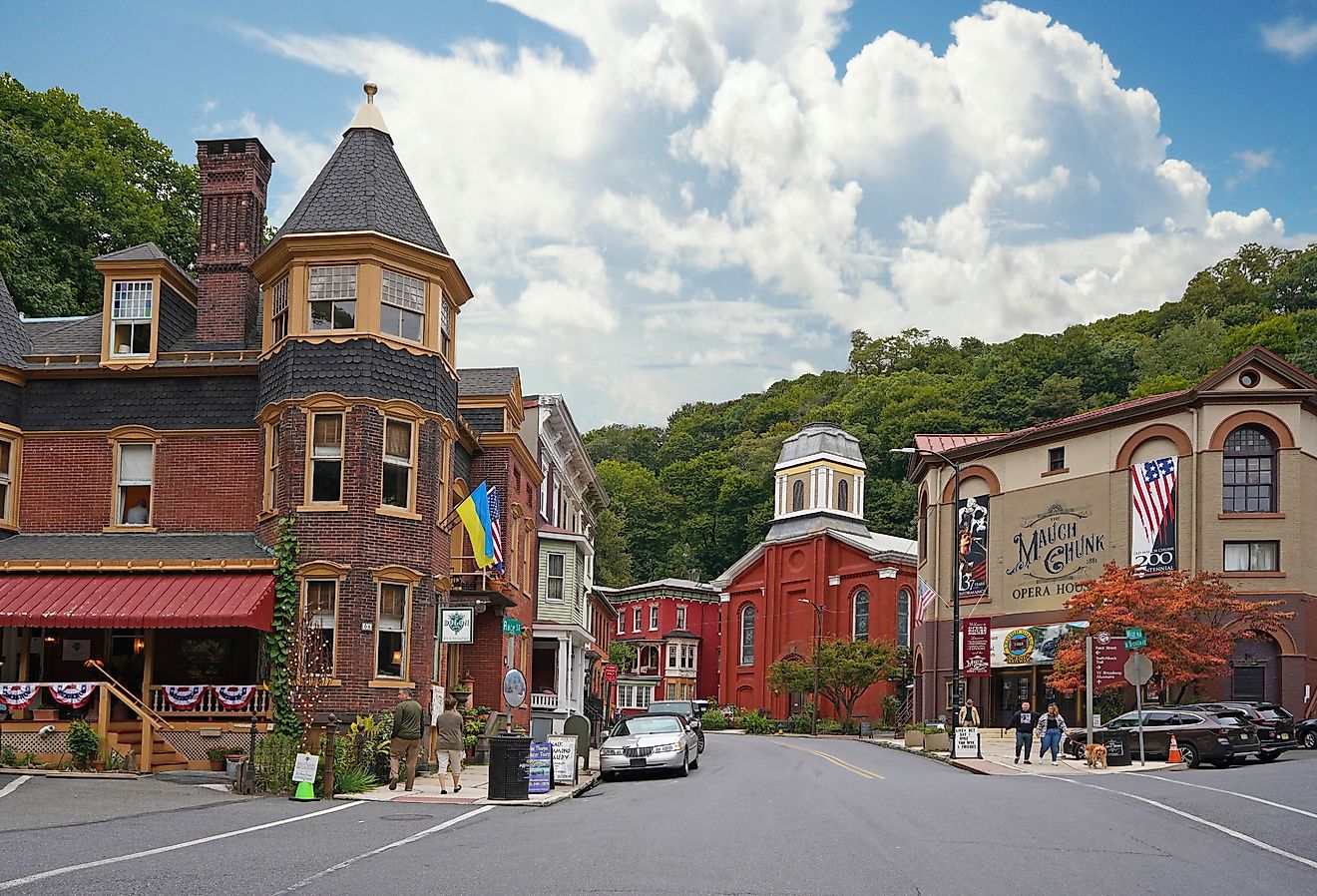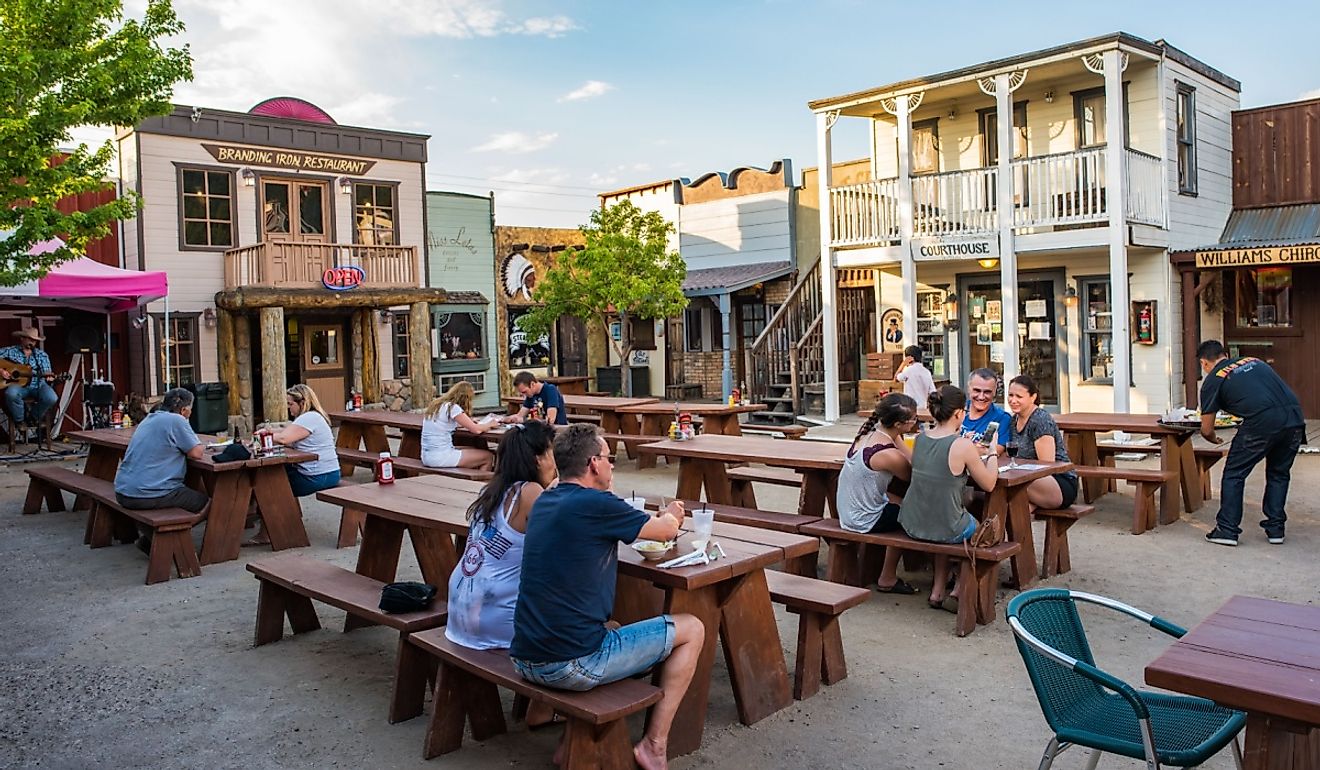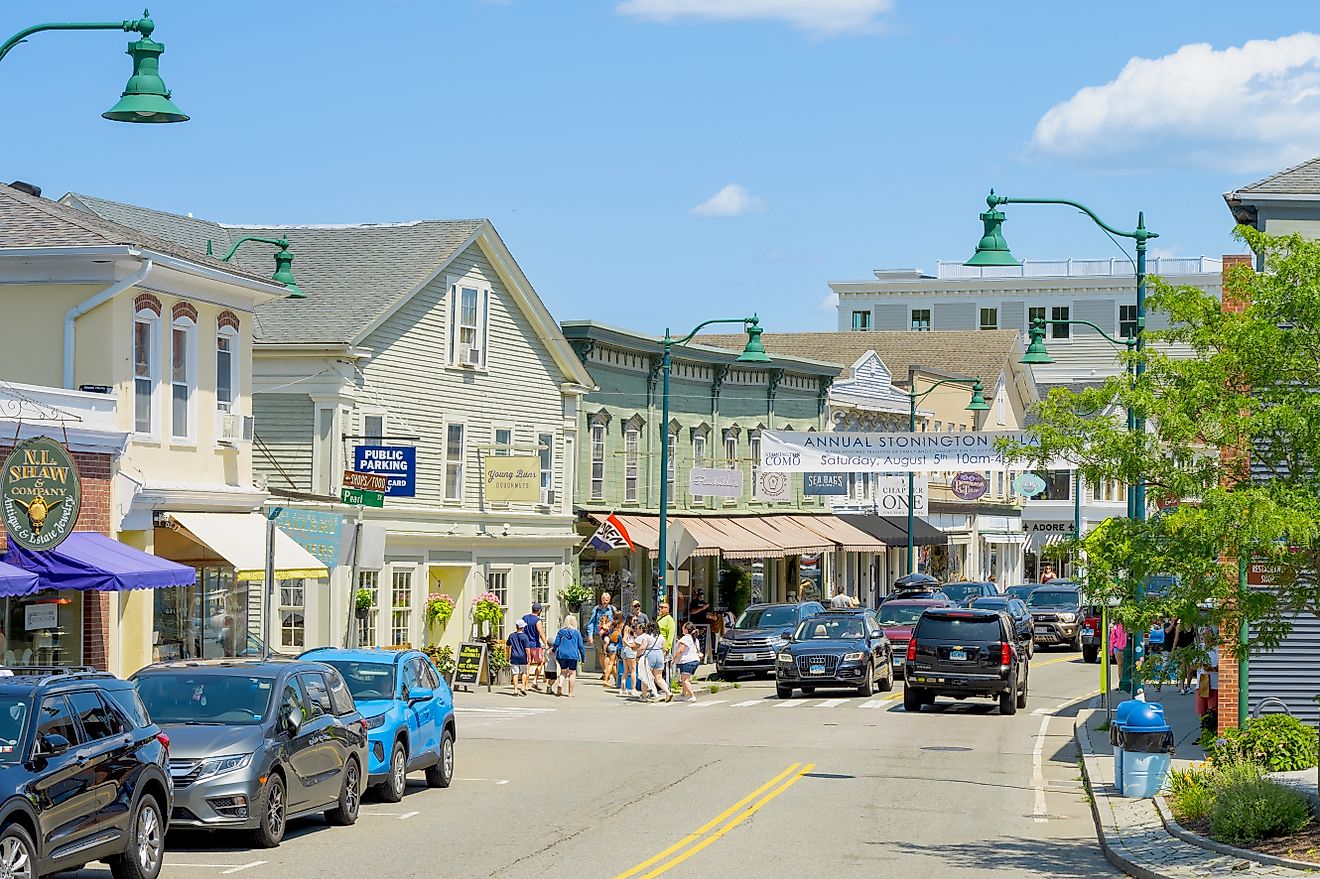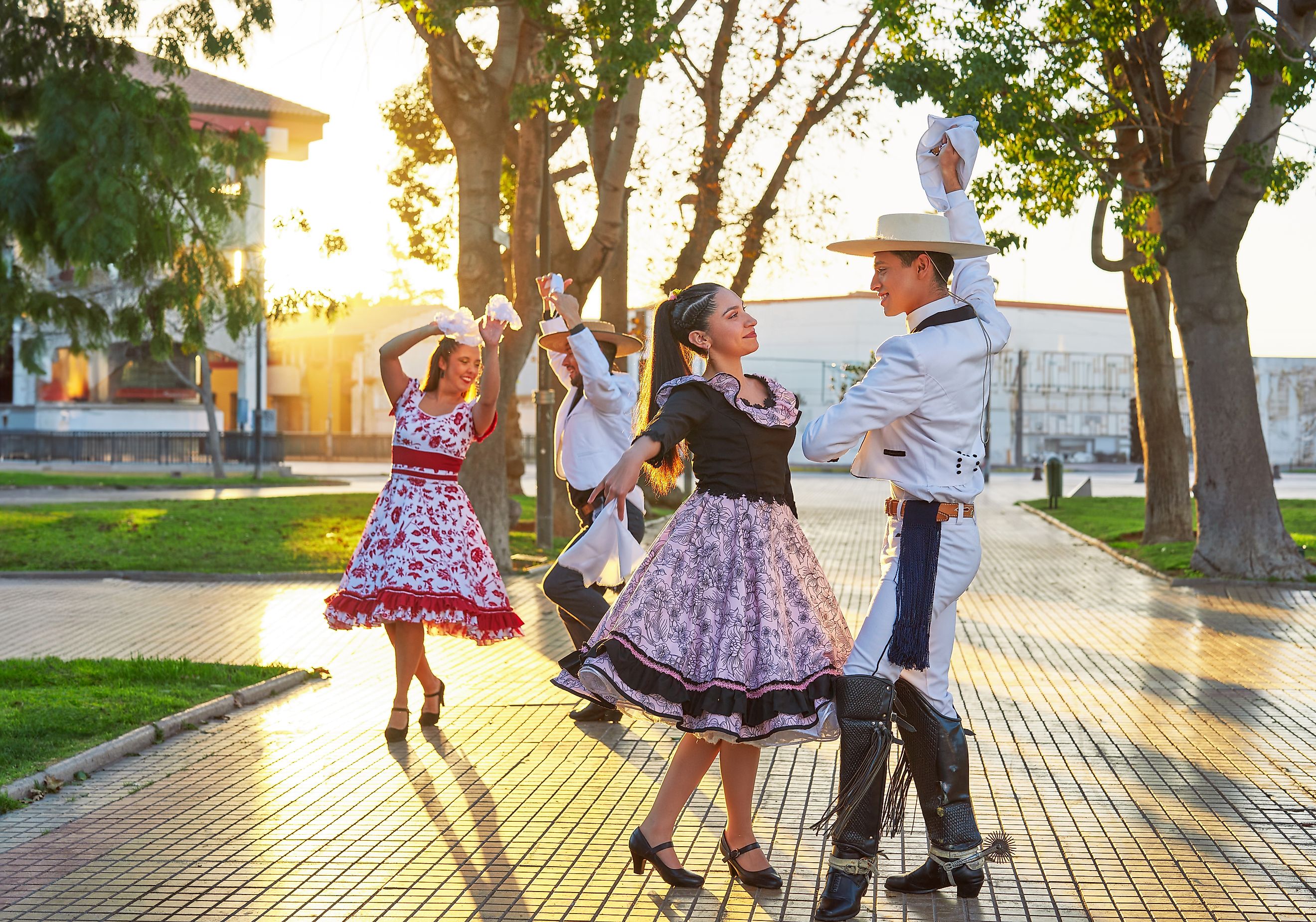
8 Most Charming Small Towns in Chile
Stretching across the Pacific Ocean, Chile's incredibly diverse range of landscapes encompasses the driest desert on Earth, the Atacama Desert in the north, the great Andes mountain range in the east, and the third largest freshwater reservoir, the Patagonian Ice Fields in the south. Home to vibrant cities and harmonious small towns, it is an irresistible adventure land with Santiago, a modern capital right in Chile's heart. Offering easy access to the ocean, the mountains, and other natural wonders, Torres del Paine National Park, with its granite pillars, azure lakes, and steppes, is one of the Southern Hemisphere's most impressive sights with easy access.
The small town of Puerto Natales nestles along the stunning Ultima Esperanza fjord, between the rugged eastern steppe and giant mountains to the north—Patagonia at its purest—with a cattle ranching identity and innate sense of hospitality, like lovely inns, cozy cafes, and pubs along the wind-ravaged streets. Isla Negra is Pablo Neruda's muse, where he spent nearly 40 years living in a seaside house, now a museum with his large collection of curiosities set against the dramatic scenery of beating ocean waves against the rocky shores.
Castro
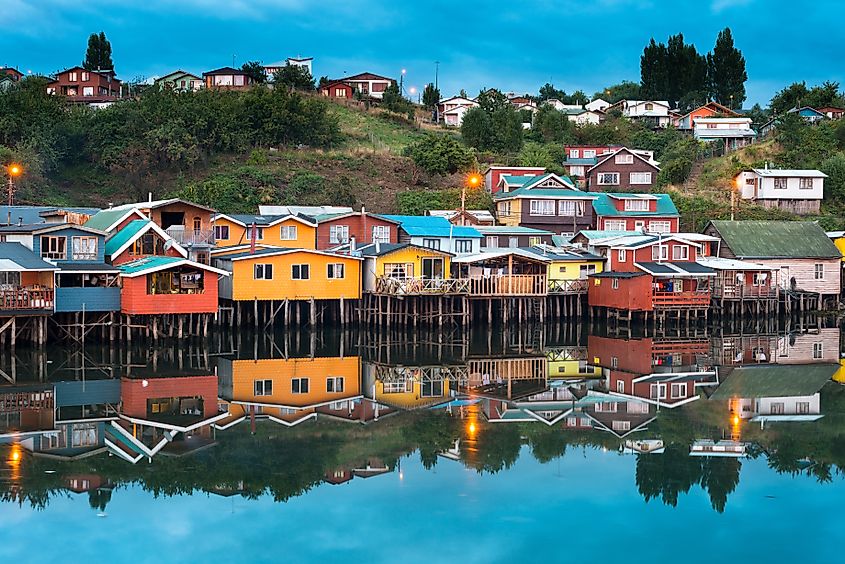
Traditional stilt houses, known as palafitos, in the city of Castro on Chiloé Island in Southern Chile.
Bursting with charms as the oldest and largest town on Chiloé Island, Castro was founded in 1567 by Chile's conquistador and royal governor, Martín Ruiz de Gamboa. Growing out of its strategic, quiet settlement self with a plan to conquer the island’s Huilliche from the river estuary, Charles Darwin still called Castro forlorn and depressing when he visited in the 1830s. Turning up its charms since then, welcome today to the island’s thriving capital, with an attractive waterfront row of shingle-roofed palafitos on stilts and attractions like the Iglesia San Francisco de Castro. Thanks to the Jesuits, this 1912 replacement for its burned-down predecessor is the most exuberant of the island's 16 wooden Chilote churches on the UNESCO World Heritage listing.
The twin-towered neo-Gothic Franciscan church is a riot of color around an iron frame of brightly painted alder wood in buttery yellows, mauve, and violet details that offset the plainer but elegant, richly polished wooden interior. After breakfast or java from Magnolia Cafe Y Pasteleria and a stroll through the local market, Mercado Municipal de Castro, Museo Municipal de Castro is a great stop for more backstory of the prominent town on Rio Gamboa. Don't miss a memento by the charming fountain, the Little Mermaid Statue, and the sunset views from Palafitos de Pedro Monttn, while Glober Trotter's is a reputable B&B among budget-minded travelers to wind down. As an important center for Chile’s salmon industry, visitors can indulge in seafood restaurants like Palafito Sabores De Mi Tierrato over the waterfront.
Futaleufú
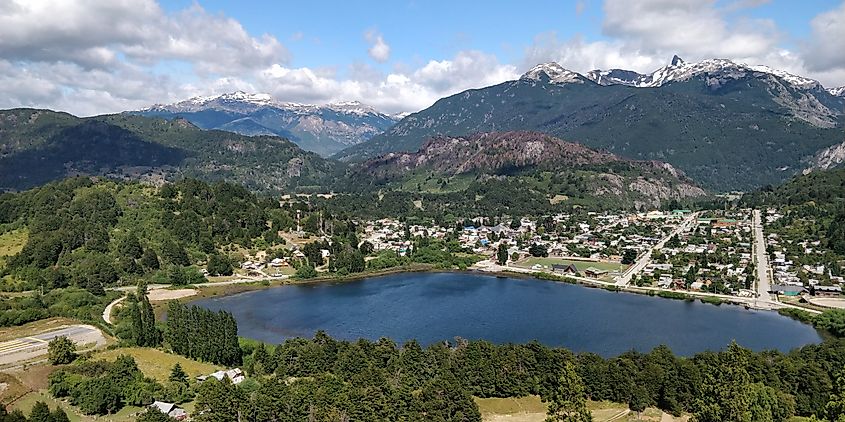
The city of Futaleufú in Chile is surrounded by mountains.
Nestled in a verdant valley, it is no wonder that this pretty village, surrounded by an amphitheater of snow-encrusted peaks, as if guarding her beauty slumber, is considered one of the most picturesque in Chile. The craggy giants bestow a dangerous appeal, while Futaleufú, at the junction of two majestic rivers, is wild at heart. Home to only 1,200, not counting the year-round photographers and sightseers along the unpaved streets with colorful, clapboard homes, its population swells in the summer with whitewater rafters to experience Chile's best class V rapids on the namesake river. Rio Espolon is excellent for kayaking, while Laguna Espejo is a pristine sight at its heart, set against the mountains.
Tourists jostle with locals in a fun atmosphere around hostels, cabanas, cafes, and eateries centered around Plaza de Armas. Visiting in the off-season offers more serenity while still providing memorable experiences. A single photo can capture the charm and a local tip of the hat, and 'Buenas tardes' reflect Futaleufú's traditional hospitality. From unforgettable rafting adventures to the lushly forested hills, visitors can enjoy hiking, biking, and fly fishing, and if you're keen for more thrills after the rapids, try canyoning. The unchanged fabric underneath the transcending beauty of this northern Patagonia town will stay with you all your life.
Isla Negra
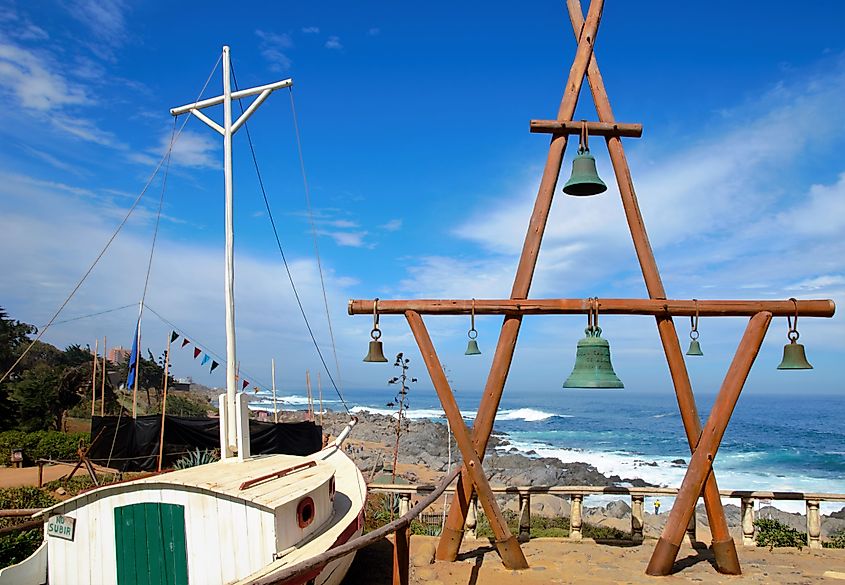
Pablo Neruda's house in Isla Negra, Chile.
Subject to the incessant waves pounding the rocky shores, this coastal town, where Pablo Neruda spent nearly 40 years when not traveling or in exile, has been an escape for all kinds of artists. Visitors can follow his steps to see the side of Isla Negra through poetic eyes that sparked his playful imagination, falling in love with the town's dramatic scenery. Neruda's rambling wood-and-stone house is an eccentric seaside museum with his lifelong collection of muses and curiosities. From ships' figureheads to seashells, world maps, strange insects and butterflies, and unique masks of various origins, Casa de Isla Negra exudes a magical aura as if he's still in residence. Afterward, get a breather along a little beach, Santuario Punta de Tralca, for your own seashell treasures or a picnic.
Visitors also have a unique chance to see an embroidery that was stolen in 1973 during the Pinochet dictatorship and reappeared in 2019. For the first time, the work of Bordadoras de Isla Negra, a women's collective once too inspired by the omnipresent poet's spirit, is at the Biennale Arte on select days from now through September. Meanwhile, the wine called "Isla Negra" comes from a division of Cono Sur Vineyards and Winery, producing an attractive wine with an elegant and aromatic scent that flows down smoothly after a play on your tongue with slightly sweet notes of citrus, grapefruit, and peach. Playa Punta de Tralca is a busier public beach, so instead of facing the crowds, grab a coffee at Viva la Pepa and stroll the picturesque long wooden boardwalk, Humedal El Totoral.
La Serena
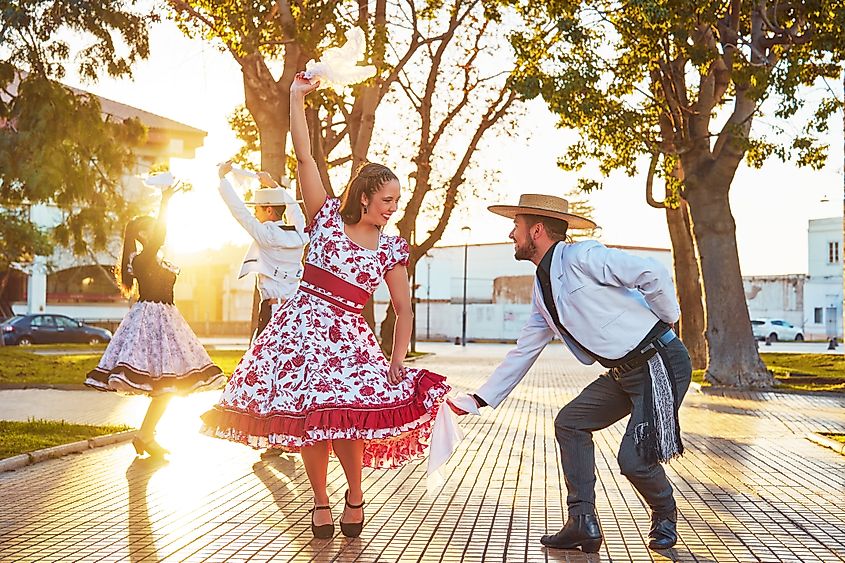
Founded in 1544, this larger town with a pretty name, the second oldest in the nation after Santiago, is the elegant capital of Región IV (the Coquimbo region). Appealing to every type of traveler with beautiful architecture and a beckoning long golden shoreline, La Serena absorbs hoards of local and visiting holidaymakers but stays peaceful outside the Chilean summer rush. To avoid the beach resort vibe, it is best to visit during the traditional summertime vacation days off work in the US. La Serene may exude a neocolonial or Spanish Colonial Revival vibe, though much of the city was rebuilt, revamped, and saw new additions in architecture during the years of the native Gabriel González Videla's presidency under his "Plan Serena" of the late 1940s.
While sauntering along the wide tree-shaded avenues past dignified stone churches, take a breather at one of the lively plazas downtown to soak in the opulent atmosphere. Offering a bright mix of palm-lined shores, culture, and recreation like a casino and a large mall, the nearby Elqui Valley offers relaxation in one of the country's best areas for stargazing and wine. The square concrete lighthouse from 1951, Faro Monumental, is unmissable on a popular beach, just like Cerro Rande, a mountain peak, when you look back over your shoulder. From Autódromo Huachalalume, a famous racetrack, to Centro de Eventos Serena Aventura, an amusement park, a snack at El Catuto, and a stroll through the marketplace, Jumbo offers more local atmosphere before finally giving into the beachy vibe.
Pucón
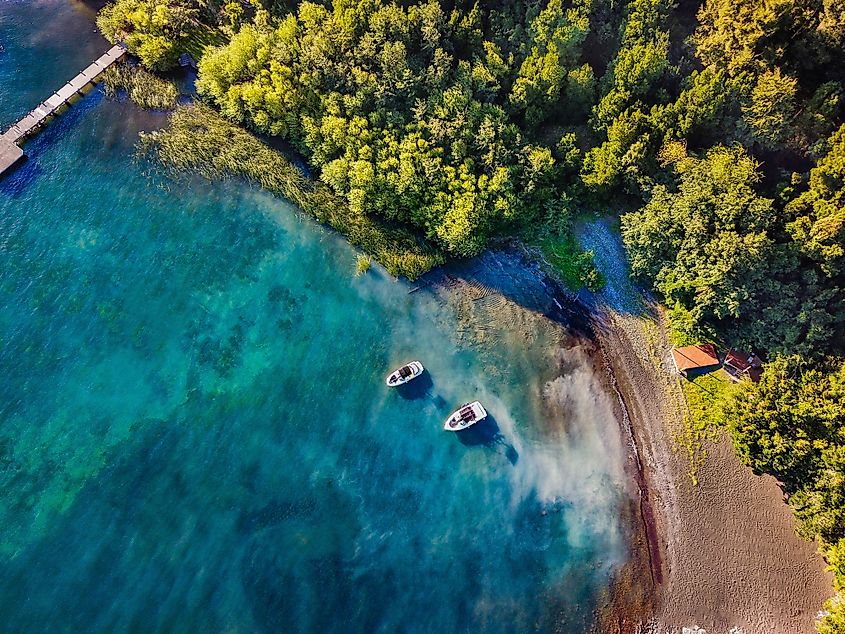
Villarrica Lake in Pucón, Chile.
Bestowed with a stunning landscape at the skirt of a smoking volcano, Pucón is Chile's self-proclaimed outdoor adventure center. Located at the edge of the glittering Villarica Lake, it's easy to enjoy the many outdoor activities and water sports to keep busy for a week, with plentiful hotels and great restaurants like Cilántropos. Espacio École is a popular vegetarian restaurant to recharge your batteries in between all-year-round epic adventures like rafting, kayaking, fly-fishing, hiking, and even canyoning. If nothing else, set up a photo shoot in view of the snow-capped volcano that shares the town's name, or take a stroll into the lake along the protruding peninsula with many observation points from the trail around its perimeter.
Visitors can capture the local charm from one of the rough-hewn wooden cafes, part of the local aesthetic appeal like the popular Trawen, just a hop to the Mirador La Poza 360-degree observation point over the lake. Offering easy access to Chile's beautiful national parks and reserves for adventures, the iconic Huerquehue, Villarica, and Santuario El Cañi are accessible for recreation and relaxation in nature. From Salto los Mellizos, Palguín Adventure Park, to Salto El Léon, an eco-park, there are countless cascades within 20 minutes. Visitors can beat the January and February crowds at the local beach on the fringe of summer in December for holiday shopping at crafts stores filling downtown and ring in the New Year at a local pub in the inebriating air from the forested surroundings.
Puerto Natales
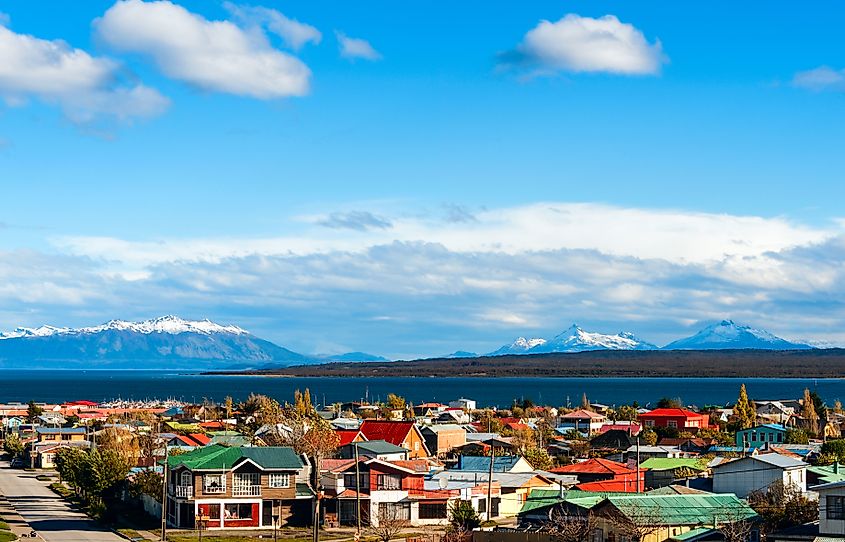
Strait of Magellan in Puerto Natales, Patagonia, Chile.
Along the stunning Ultima Esperanza fjord, between the rugged eastern steppe and giant mountains to the north, Puerto Natales is Patagonia at its purest. As an idyllic blend of cattle ranching identity and a new taste for tourism, Natales' innate sense of hospitality fosters a modern mecca with lovely inns, cozy cafes, and pubs along the wind-ravaged streets. Visitors can imbibe the local culture through funky bistros, like Baguales Brewpub, bookstores, and nature-driven outfitters that can set you off to summit Cerro Dorotea. See the town from great heights, and if you're lucky, the majestic condors in flight who nest in the vertical mountain walls. The nearby Torres del Paine National Park is one of the world's finest slices of wilderness.
Not just a jumping-off point for adventures, Natales offers rich culture and family moments along the waterfront with amazing sculptures like the fingers protruding out of the earth, La Mano, and nearby, the charming Monument of Milodon, the bear. Visitors can explore the Mylodon Cave or sail through the Última Esperanza fjord, bedazzled with glaciers, and seek the 10,000-year-old backstory to it all at the Museo Histórico Municipal since the glacier carved the way through this southern area of Chile. After adventures, the abundant Patagonian cuisine and excellent hotels feel like a cozy hug, and perhaps skip a leg day for a simple boardwalk stroll along Monumento al Viento, a park with a pier and fantastic lamppost sculptures soaring.
Puerto Varas
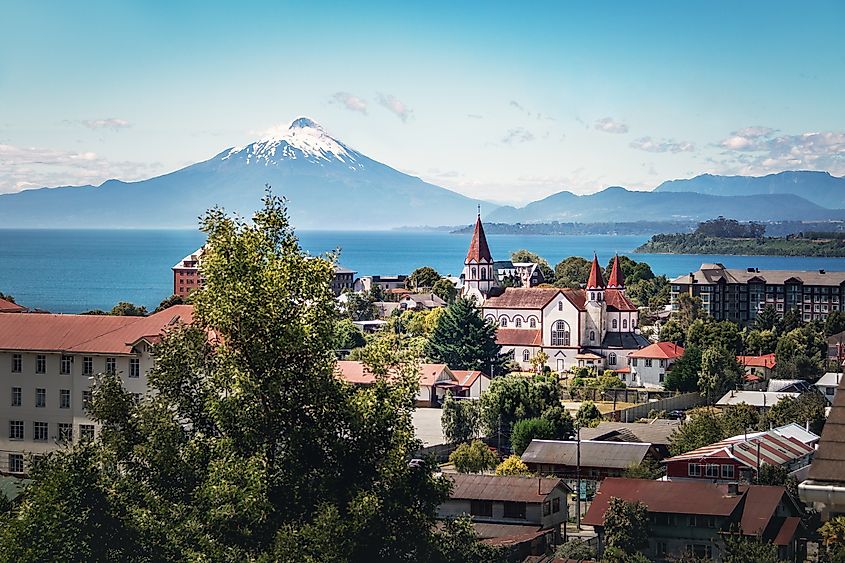
Aerial view of Puerto Varas with Sacred Heart Church and Osorno Volcano in the background, Puerto Varas, Chile.
Merging Chilean-German tradition with a hunger for adventures, welcome to the City of Roses. Not just another small town at the gateway to the great outdoors, but with real Germanic architecture along the modern plazas and residential areas with charming homes and manicured gardens, each street corner holds a magical discovery, like the Iglesia del Sagrado Corazón de Jesús. The locals saunter as if oblivious to opportunities for outdoor activities and recreation along the banks, like strolls, kayaking, sport fishing, or the views of volcanoes on Lake Llanquihue! From the iconic hilltop cross to the charming covered pier, in the winter, don't miss the "Festival de la Lluvia," a celebration of rain. Museo Pablo Fierro and Galería Bosque Nativo offer year-round culture next door to the Cambalache Restaurant.
Yes, Puerto Varas' exquisite gastronomy has its own magnetic pull on tourists to explore local cuisine, like the waterfront Mesa Tropera, alongside a casino and lively nightlife. Visitors can rent a bike in town for a scenic ride through the harmonious views along the waterfront, the rose-scented streets, or to the magical Petrohué Falls via beckoning beaches, all working the magic to extend your vacation just a day longer. One of Chile's most picturesque lakeside villages is lively and thriving with tourists year-round, like bees drawn to the roses that drown historic homes preserved in their original state. The wide avenues hold hotels, bars, and restaurants without compromising on the old-world charm, enriching your visit with comforts, conveniences, and great outfitters at hand to enjoy hiking adventures and even canyoning.
Putre
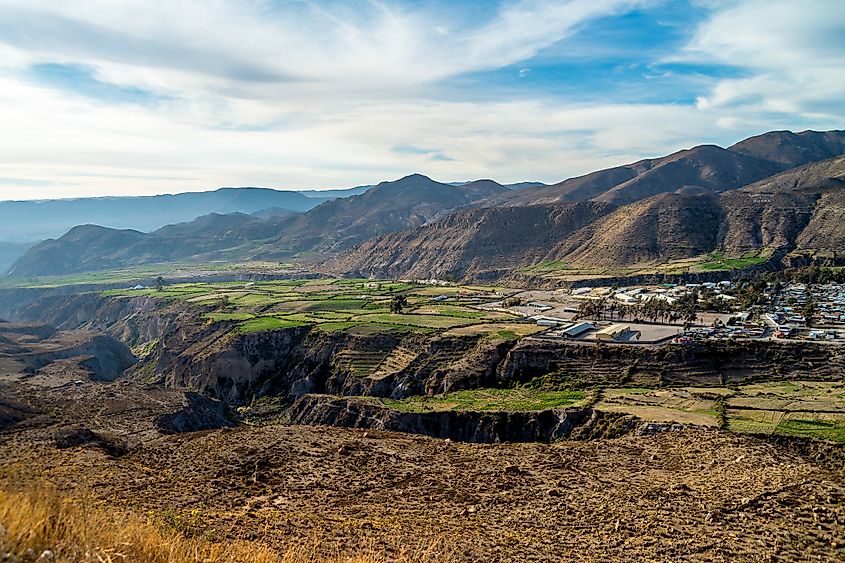
Putre village in northern Chile, located in Lauca National Park.
This quiet pueblo is a compelling insight into Andean culture at the gateway to Chile's Altiplano on the edge of Lauca National Park. Home to under 1,500 residents, Putre bursts with charm and attractions well beyond its grasp at an impressive altitude of 3,500 meters (11,483 feet)—one of Chile's most spectacular locales. Near the Peruvian border, some 130 kilometers east of the coastal Arica, the double summits of the 5,775-meter (19,000-foot) Taapacá Volcano complex step further on its diminutive size. But there's much to discover in the prevailing feel of a pre-colonial Inca village, the Aymara settlement (the indigenous people in the Andes and Altiplano of South America).
Well off the beaten track, Putre, replete with lodgings like the popular Hostal y Restaurant La Paloma, alongside small-town shops, gardens, and even a local shopping mall, Almacén Daría, is undeniably pretty all along the colonial streets converging at the bright Plaza de Putre. Just south of town, Camino del Inca is a beautiful walk from Socoroma to Putre. Visitors can enjoy easy access to one of the most beautiful national parks in northern Chile, while Mount Laram Q'awa, a quick detour from the park, is a worthy stop with a chance to see herds of grazing guanacos. Home to an airport, driving is still the preferred way to reach Putre after an uphill battle into the clouds via Carretera International.
Final Thoughts on Chile's Charming Small Towns
Santiago de Chile is a must-see central, lively capital, a perfect jumping point north or south to its complete opposites, the tiny towns. Putre, a quiet pueblo, offers a compelling insight into the Andean culture at the gateway to Chile's Altiplano on the edge of Lauca National Park at an impressive altitude of 3,500 meters (11,483 feet) and clouded hills spotted with grazing guanacos.
Chile is an astoundingly long country, stretching from north to south for some 4,300 kilometers (2,671 miles) along the western South American border. Each town, with charm and attractions well beyond its small grasp, is a unique blend of energy, history, and scenic beauty in an atmosphere charged with a spirit for adventure. Puerto Varas is the City of Roses, while Futaleufú is considered one of Chile's prettiest villages within an amphitheater of craggy, snow-encrusted peaks.







